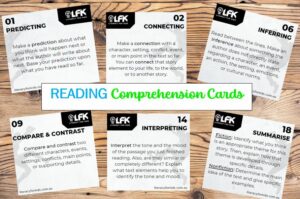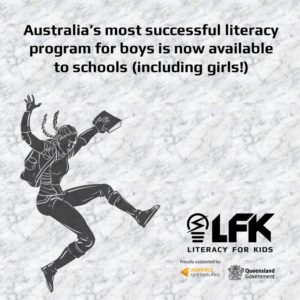It’s likely that most teachers are starting to feel some overwhelm by the need to cover everything by the end of the year. When I visit schools and read emails, there’s the frequent comment, “It’s hard fitting everything into a literacy block!” It is! However, I want to offer 5 Game-Changing Tips to get the most from your literacy block.
1) Try not to teach or practice literacy in isolation
If you have a 90 minute literacy block it can be tempting to allocate 15 minutes for grammar, 20 minutes for reading practice, 20 minutes for writing , 10 minutes vocabulary and 15 minutes for spelling. When I speak with teachers, it feels like it’s well planned and ticking the boxes for each literacy concept, however, we find there’s two challenges:
a) Invariably, teachers run out of time and feel like they’re falling behind (which is stressful).
b) When teaching literacy in isolation, we are teaching our students to apply literacy skills in isolation. As an example, when we are reading a text we’re not just focussing on the vocabulary, we are utilising context, word choice, asking questions and comprehending.
So, how to embed a variety of literacy skills into a single reading experience? How can this be connected to writing?
Creating a literacy tool that explicitly teaches core literacy skills – and connects key literacy concepts – was a huge motivator for me to create our literacy programs (Literacy for Boys & Literacy for Kids). I wanted to do some of the heavy lifting for time-poor teachers.
As a reading lesson example, a teacher can select a topic for a reading passage e.g. Rollercoasters. This passage is going to give students an opportunity to practice eleven key comprehension skills. The teacher can use this same passage to explicitly teach new vocabulary (that’s within the same passage). Spelling and grammar can be linked to describe how a rollercoaster moves eg velocity, accelerate, rapidly. You can address punctuation and the use of exclamation marks to reflect excitement. Under the ‘Rollercoaster’ topic, teachers will find that the grammar, spelling and punctuation tasks all link to the theme of rollercoasters, which provides context and helps to cement understanding.
I encourage teachers to consider: what are all of the opportunities that I have within this reading or writing experience to teach multiple literacy skills?
2) Flexibility AND Routine
Can these two exist at once? Yes! We encourage teachers to consider being flexible in their literacy block. The goal is not the routine, the goal is the content that students are engaging with in the routine. Let’s look at a couple of examples: You start reading aloud and pick up that your learners need more background knowledge in order for them to understand the text. You will have to pause, perhaps show them some images, a short video or introduce some vocabulary words and guide them to develop the knowledge in order to understand the text. Your budgeting time for reading aloud has changed but the students will benefit from this flexibility.
Another example: After issuing a writing task you discover that your students require more time to revise their writing, so you decide to extend the overall time for this specific writing assignment. You may have to teach certain editing skills and allow your students to utilise them.
A teaching literacy goal is to let your learners guide your literacy block with their response to your instruction, not the exact time period in your schedule.
3) Expectations of time
I think that most of us find it difficult to fit everything in and the classroom is the best example of this! The purpose of this third recommendation is to be realistic about what you have time to teach. We underestimate how long tasks are going to take, which adds pressure to rush through some content and then this becomes a source of frustration. Consider using a timer and involve the students in the process by informing them that we want to be as effective a possible, so we are going to time our tasks. Our advice is to underplan and then you have a buffer of time to fill creatively.
4) Proficiency vs Completion
This can be hard for teachers as we often view our instruction as a checklist. However, it will be a far more effective use of your instructional time if you take the necessary time to genuinely support your students’ progress toward mastery, even if it means slowing down your teaching pace. You might need to spend a couple of days on a topic or even revisit and reteach a lesson. The key is to stay attuned to your students’ progress—are they truly advancing as a result of your lessons? If not, it’s essential to either adjust your approach or slow down. I understand this can be challenging, but try to make it a priority this term and a literacy goal for next year..
5) Adjust the ‘5 day schedule’ approach
Don’t let the five-day school week dictate your teaching schedule. How often do we feel that Monday is teaching a new topic/skill/concept, then we’re going to practice on Tuesday, Wednesday, Thursday, and then we’re going to assess on Friday. It can seem very neat and orderly. Yet this means that Fridays can be a test-heavy day for our students as may also encompass checkpoint quizzes for maths, science and other subject areas.
Give yourself permission to introduce a new concept on a Wednesday or issue a test on a Thursday. Consider the following: instead of letting the calendar schedule drive your planning, focus on the content you’re teaching and how your students are responding to it.
We hope that you find some of these strategies worth adopting into your literacy block. Feel free to send your enquires to info@literacyforkids.com.au or info@literacyforboys.com.au




